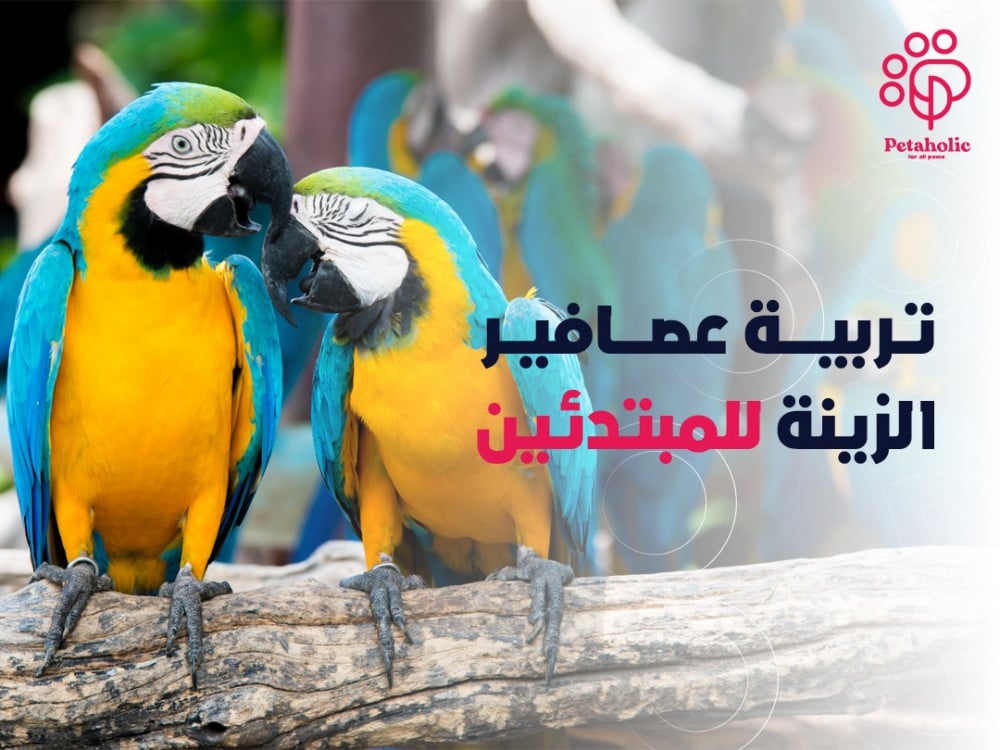
Deciding to have a pet is not an easy decision! Just because birds are smaller than a cat or dog, this doesn't make them any less involved or easy. Even small birds like macaws can live for 10 years, and larger parrots can live for 50 years or more. So it's important to get a basic understanding of some of their needs before bringing one home. That is why we present to you a guide to raising ornamental birds for beginners so that you will be like an expert when you finish reading. At Petaholic, you will also find the bird supplies you need to prepare your home to welcome your new feathered friend.
What are the most important basics of raising ornamental birds for beginners?
The basics of raising ornamental birds for beginners are as follows:
Choose the type that suits you
There is a good selection of birds and parrots available that can be considered ornamental birds. Although parrots around the world are still a favorite pet bird, finches are smaller and come in a range of colours, and if properly cared for, can live for over 10 years, like canaries!
When it comes to larger parrots like the African Grey, they are generally more demanding when it comes to their care. If they are bored they can be very destructive, and they can be very loud to try to get your attention. This means they are not ideal pets if you live a busy life, work long hours, or have intolerant neighbors. A good choice between the two is the Cockatiel. These birds make excellent pet birds when hand-fed. They are very gentle and rarely make any noise, only whistling.
Balanced nutrition
Like all pets, birds need balanced nutrition with a diet designed for them with all the necessary ingredients to keep them fit and healthy. A healthy diet for most bird species consists of a variety of grains, birdseed, fruits, and green leafy vegetables. It is important to do your own research on the type of food your pet birds eat. You should know that an unbalanced or incomplete diet is one of the most common causes of illness in ornamental birds. But if you're concerned that your bird isn't getting all the nutrients it needs, you can add additional supplements to make sure it's getting all the vitamins and minerals it needs.
Communicate with the bird
Taking time to bond with your bird is essential to building a strong, long-lasting relationship with your new friend. Just as wild birds have a flock mentality, forming a bond with your pet bird is crucial to helping them understand that you are their friend. Once you bring your bird home, your family serves as a new flock for the pet bird. So he naturally wants to join your family activities. If your family is gathered together in one room, the bird may scream to get your attention to include it in the crowd.
Suitable, stress-free environment
When bringing a bird into your home, there are a few things you need to know to protect it and keep its life as stress-free as possible. Birds have very sensitive respiratory systems, so it is essential that you do not expose your bird to common, everyday things that are toxic to birds. There are a bunch of toxic things in your home that you should be aware of, from fumes from the kitchen to sprays and air fresheners. These are all highly toxic to the sensitive respiratory system of birds. You should also avoid any other factors that may lead to stress, such as cats wandering around the bird or sudden loud noises that might startle your bird.
It is also important that when your pet birds spend time outside their cage, they are constantly supervised to avoid access to other pets in the home and any other household toxins. Reducing stress is especially important when your bird is going through the annual molt where it sheds old, worn-out feathers and grows new ones. This generally occurs shortly after the breeding season from February to April, and during this time your bird's body is under additional stress as it experiences both physical and emotional stress.
Choosing the right cage is the basis of raising ornamental birds for beginners
Pet birds need space to stretch their wings and explore their surroundings, so the larger the cage, the better! A variety of toys will provide enrichment and excitement, while giving these intelligent birds something to do. Small birds like canaries enjoy flying all over the cage, so it is always best to use a flight cage, especially with multiple birds. Also, larger birds, such as parrots, need chew toys. Access to natural light is preferred, but it is also a good idea to avoid placing the cage in areas of extreme dryness, heat, and direct sun. When choosing a cage, the distances between the bars should be proportional to the size of the birds inside, for their security and safety.
Among the best bird cages that we recommend at Petaholic are:
What type of ornamental birds is suitable for you to raise at home?
When you are just learning about raising pet finches for beginners, choosing smaller, hardier species that mature quickly is your best option. Young birds are easier to handle, and if they mature quickly, they won't need much care. Here are some of the best bird species you can choose from as a beginner.
Budgie
The budgie is a small parrot, which is charming and playful, and males can be taught to talk. Because they are so small, budgerigars are the ideal bird if you live in a smaller space, such as an apartment. Budgies usually eat a seed-based diet, although they should also be fed fresh vegetables.
Cockatiel (cocktail)
The cockatiel is a small member of the parrot family, and has become the most popular breed with many colorful options and vibrant head markings. Cockatiels also mature quickly, so you can start breeding them when they are only one year old. Cockatiels eat a diet of berries, fruits, seeds, and leafy vegetables.
love birds
Another member of the parrot family, lovebirds are small enough that you can easily house them in an apartment. They usually lay between four and six eggs, which need to incubate for about 21 days. Lovebirds begin weaning their young when they are about eight weeks old, so the best diet for them is a mixture of seeds, dark greens, and fresh fruits and vegetables. Lovebirds do well in pairs and can form very strong bonds. They are relatively noisy birds, which you should take into consideration before you start breeding.
Among our large and diverse range of bird foods, if you are raising budgies, we recommend:
Now that you've reached the end of this guide, we can say that you're ready to welcome your first pet bird. You can buy all its high-quality supplies at the best prices from Betaholic.
Read also:-
- The best types of parrot birds suitable for raising at home
- How to raise budgie birds in the correct way

